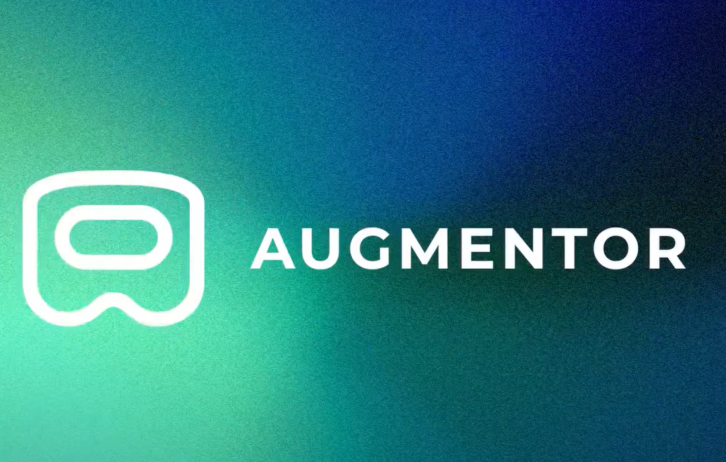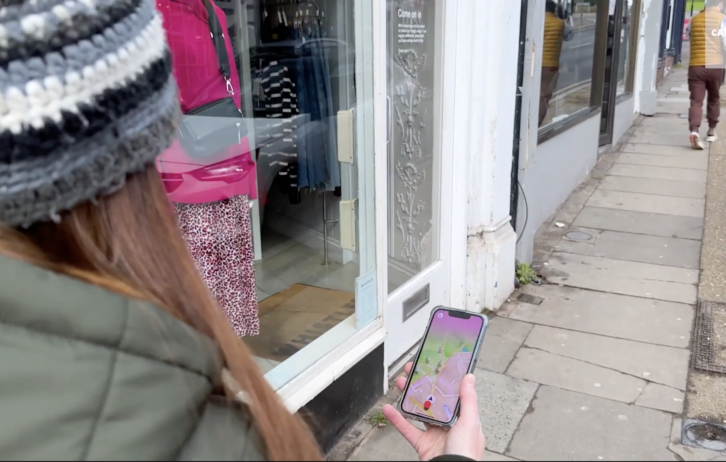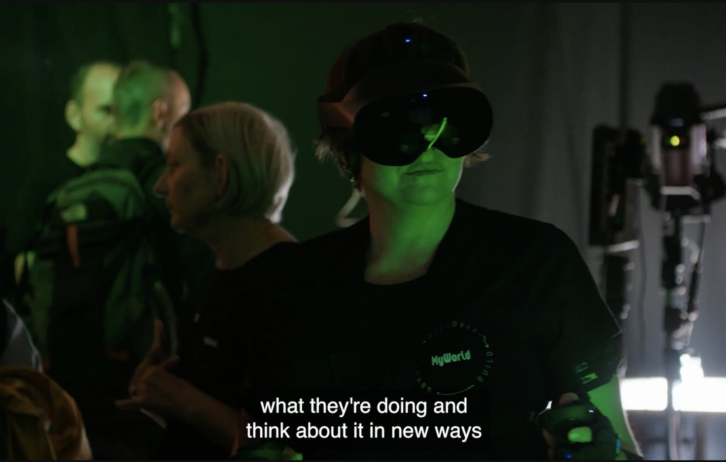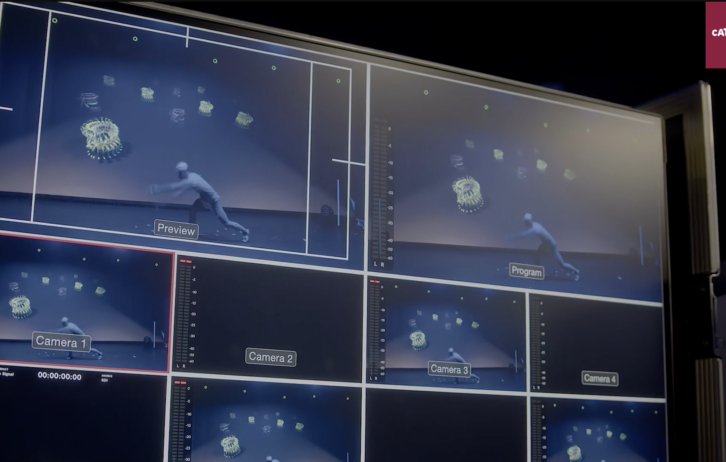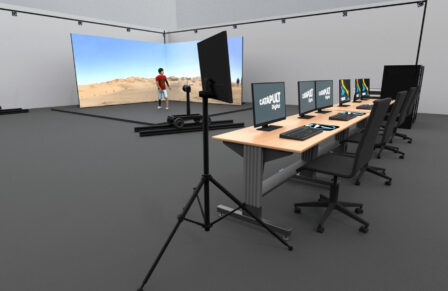Everything you need to know about immersive technology
Posted 17 Apr 2024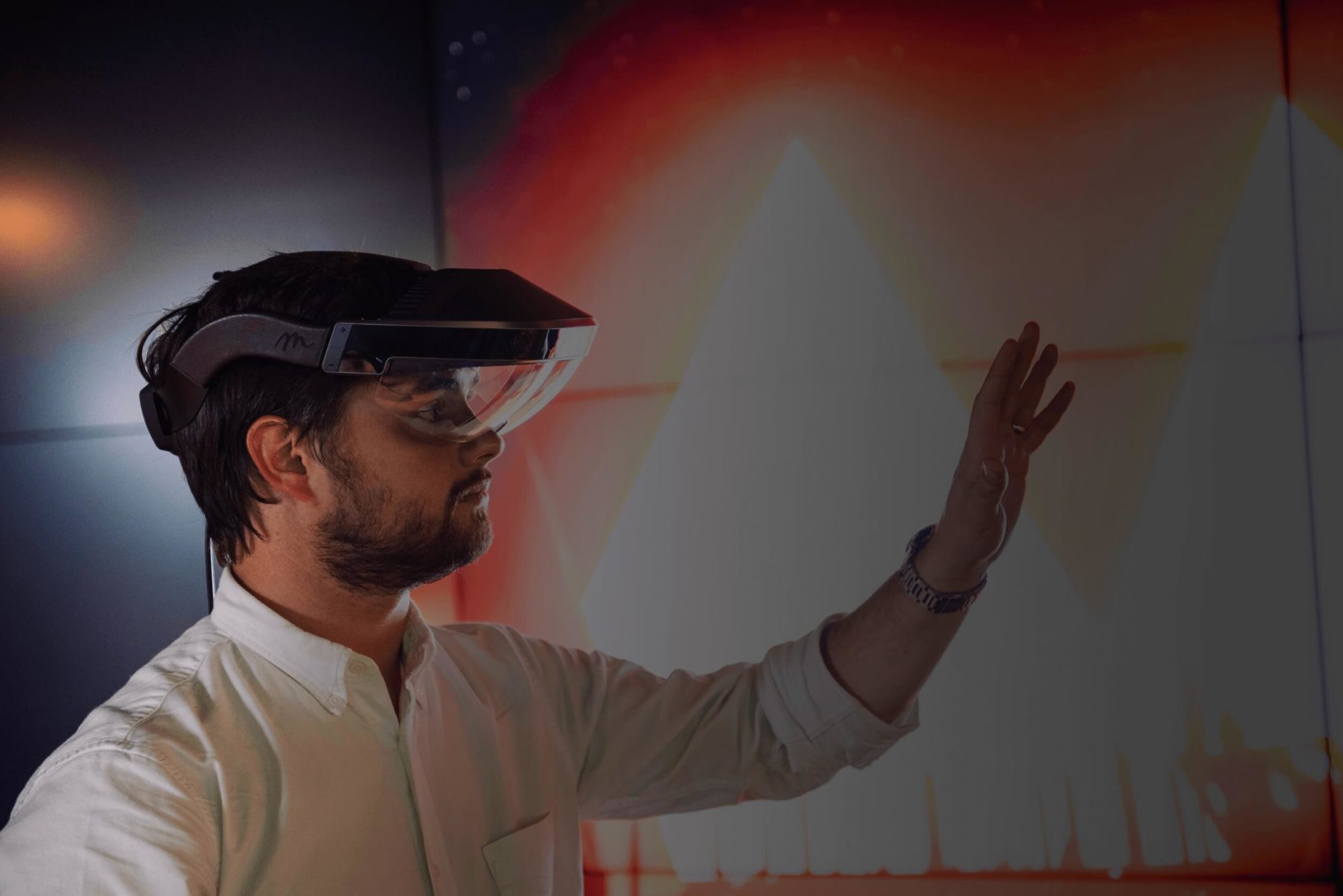
Everything to know about immersive technology
What are immersive technologies?
Immersive technology transforms the digital experience by bringing together the virtual with users’ sight, sound and event touch. Ranging from virtual reality and augmented reality to haptics, immersive technologies are new ways of creating, displaying and interacting with applications, content and experiences.
Immersive technologies allow a person to feel part of an artificial, simulated environment – for example, immersive theatre requires the audience to interact with the set, props and actors, while an immersive air control dashboard may allow the operator to see and interact with real-time monitoring data.
Virtual reality
Virtual reality (VR) completely replaces a user’s surroundings with a digital environment using a head-mounted display (HMD) with two near-eye displays, one for each eye. This is a closed and fully immersive 3D environment. VR lends itself to both industrial applications and creative experiences with new modes of storytelling. Perhaps the most widely known immersive technology, virtual reality has been around since the 1990s but it’s only in the past decade that VR has become an increasingly large part of our professional and private lives, running a spectrum of use cases from employee training to creative outstanding immersive entertainment experiences.
Augmented Reality
Augmented reality (AR) creates an immersive experience for users by blending the real with the virtual. Utilising computer vision and machine learning algorithms the device can understand the ‘real world’ in both a spatial and semantic sense. AR seamlessly blends the digital and physical worlds by allowing a user to overlay digital objects in a physical space. Digital Catapult has helped cultural institutions reach new audiences with AR and helped retail brands explore new AR-powered solutions to grow, and innovate within, their business. Most recently, Digital Catapult teamed up with Niantic, Cartoon Network, Studio Wayne McGregor and three UK immersive studios to develop augmented reality-powered consumer experiences.
Haptics
Haptic technologies are commonly referred to as ‘3D touch’ or ‘kinaesthetic interaction’. Unlike other immersive technologies, haptics uses tactile feedback including pressure, vibrations, and movements to enable the user to “feel” whilst in a virtual environment, increasing the levels of interaction to cover multiple senses. Haptic tech is likely to be one of the main ways for users to interact with applications and content in future computing paradigms, whether that’s spatial computing or in the “metaverse”. In 2020, Digital Catapult mapped the UK haptic ecosystem to uncover future use cases, players and opportunities – read the report here.
The rapid pace of development of immersive technologies has created many new opportunities for businesses to solve problems, seize new opportunities, and push innovation forward.
Why immersive experiences or solutions?
The 2022 Immersive Economy report from Immerse UK estimated the UK immersive economy had a turnover of £1.4 billion, a significant contributor to the UK economy, with other 2,000 immersive companies operating around the country. In many industries, immersive tech offers new ways of interacting, analysing, and creating content. Here are a few examples of why immersive experiences and technologies have been applied to existing cross-industry problems.
- Training
- Product design and prototyping
- Online and offline retail
- Content creation
Training
From the defence sector to energy, from healthcare to sports, immersive technologies have transformed the way training can be designed and delivered. The use of VR and AR has increased the speed and quality of training, and allows a more hands-on training experience which is very valuable and usually difficult to achieve in conventional classroom settings. This includes soft skills as well as technical ones, for example handling difficult situations or managing a team, and research shows that employees who undergo training in VR retain the information almost four times better than via training methods. Digital Catapult cohort alumnus MOONHUB has worked with companies such as Just Eat and the Royal Opera House to deliver VR training.
Product design and prototyping
Immersive technologies are helping product development teams to quickly create low-cost virtual prototypes, as well as building opportunities for more remote collaboration. Digital Catapult supported Gravity Sketch, a collaborative 3D and Virtual Reality design tool, through our Augmentor programme. Allowing teams to communicate ideas in 3D during the design process, speeding up product development, Gravity Sketch has secured £4 million funding from VC firms and is now working with the likes of Nissan and Ford. Digital Catapult award winner Fracture Reality is encouraging more widespread use of mixed reality by building collaboration tools by leveraging VR and AR for teamwork across enterprises. Its tool allows non-expert users to browse, manipulate and discuss data such as building plans, product designs or 3D scans.
Online and offline retail
In the post-pandemic world, consumers in the UK showed a stronger preference towards online shopping over in-store retail, especially Gen Z and millennials. Immersive technologies can not only create a more seamless shopping experience online, they can also have an important role in revitalising the high street by gamifying retail.
Augmented reality technology in particular can solve a frequent problem in online shopping: customers simply don’t know how a product will actually look in-situ, either in their living room or on their feet. This is especially an issue for big-ticket items such as furniture.
Developments in AR technology allow prospective customers to ‘place’ the desired item in their homes or on their body, making them more confident in their purchases. Companies like Amazon and IKEA are already using AR on their online platforms for this reason. ‘Virtual try on’ has filtered down to social media platforms such as Tik Tok, Instagram and Snapchat allowing consumers to “try” make-up or headgear on within their social stream, driving engagement and purchases.
On the other hand, AR can also stimulate Gen Z and millennials to engage with brick-and-mortar retail environments by gamifying the experience. Digital Catapult supported Arcade to develop this idea and engage with local retailers in London to pilot the project as part of the Niantic Lightship Augmented Reality Accelerator.
Content creation
Where immersive technologies are arguably having the biggest impact is in content creation. Advances in some immersive technologies, such as tracking and understanding the real world through a camera, are being harnessed in advanced media production methods to create content for stage and screen. Large LED walls combined with game engine technology are used to generate “real” backgrounds that actors can perform in front of replacing traditional green screens, and in some cases the need for post-production or even real world sets. This virtual production technology powered Megaverse’s live and interactive online experience centred around climate activism “Game Changers”.
Digital Catapult is the delivery partner for the MyWorld programme, led by the University of Bristol, which brings together leading organisations in academia, technology, creative and film from across the South West of England to cement the region’s position as a creative media powerhouse. Our flagship collaborative research and development (CR&D) open calls have provided around £2 million worth of funding for projects that are addressing a range of challenges facing the UK’s creative industries, such as investigating the potential of generative AI tools for visual effects (VFX).
What’s next for immersive technology?
Immersive technologies play a key role in the convergence of the advanced digital technologies Digital Catapult works with. The recent hype around the ‘metaverse’ is fundamentally driven by technological convergence whether it is about future networks, such as 5G, delivering high-fidelity and hybrid festival experiences, or ‘digital twins’ of processes or facilities that can be accessed remotely, in the virtual presence of friends or co-workers.
The future of human-computer interaction is intimately linked to the development of immersive technologies. Brain-computer-interfaces, haptic devices, and other multi-sensory technologies will shape how we interact with information and other people in the coming decades. Digital Catapult’s Immersive team is researching these areas to help UK companies identify use cases, facilitate access to experiment and de-risk investment, and more.
Immersive technology and Digital Catapult
Digital Catapult has supported hundreds of UK startups that have built immersive solutions, ranging from data visualisation to crime scene investigation. Through collaborative research projects, we have also published reports that give tools for thought to entrepreneurs on how to innovate new business models around immersive content and applications, and how to approach the design of their projects.
Meanwhile, Digital Catapult has partnered with leading businesses like SONY Music UK, Niantic, VIVE, Sky and Verizon to bring technology, resources, and expertise to the innovation community.
Facilities
Digital Catapult’s Immersive Lab facilities provide businesses with access to the latest immersive technologies, helping them to understand how to leverage and apply innovative technologies to their business problems.
Digital Catapult has invested in a number of physical production facilities. Our Advanced Media Production studios, a joint venture with Target3D, are the first connected network of studio facilities in the UK specially designed for research and development. These facilities allow us to not only understand the challenges facing productions working at the cutting edge of technology but also offer a space to foster new workflows, skills and technologies. The Advanced Media Production studio at PROTO in Gateshead also provides tools to address the skills gap in the North East.
Accelerators
The Black Founders Programme, with partners SONY Music UK, supported ten pre-seed or seed-stage Black-founded startups creating innovative products and services in the digital entertainment industry to get investment-ready.
We have previously run programmes that have supported the early development of the UK’s immersive ecosystem. Augmentor was designed to increase immersive startups’ investment readiness and accelerate their business growth, whilst CreativeXR, in partnership with Arts Council England, supported over 60 small businesses bringing together creativity and technology to boost the early development of novel creative immersive experiences.
Digital Catapult also provides commercial solutions for large businesses through a number of projects and workshops, inspiring and facilitating innovation in commercial contexts.
If you’re looking to solve business problems with immersive technology, contact us for more information.
Digital Catapult newsletter
Receive articles and insights like this delivered directly to your inbox
Subscribe now